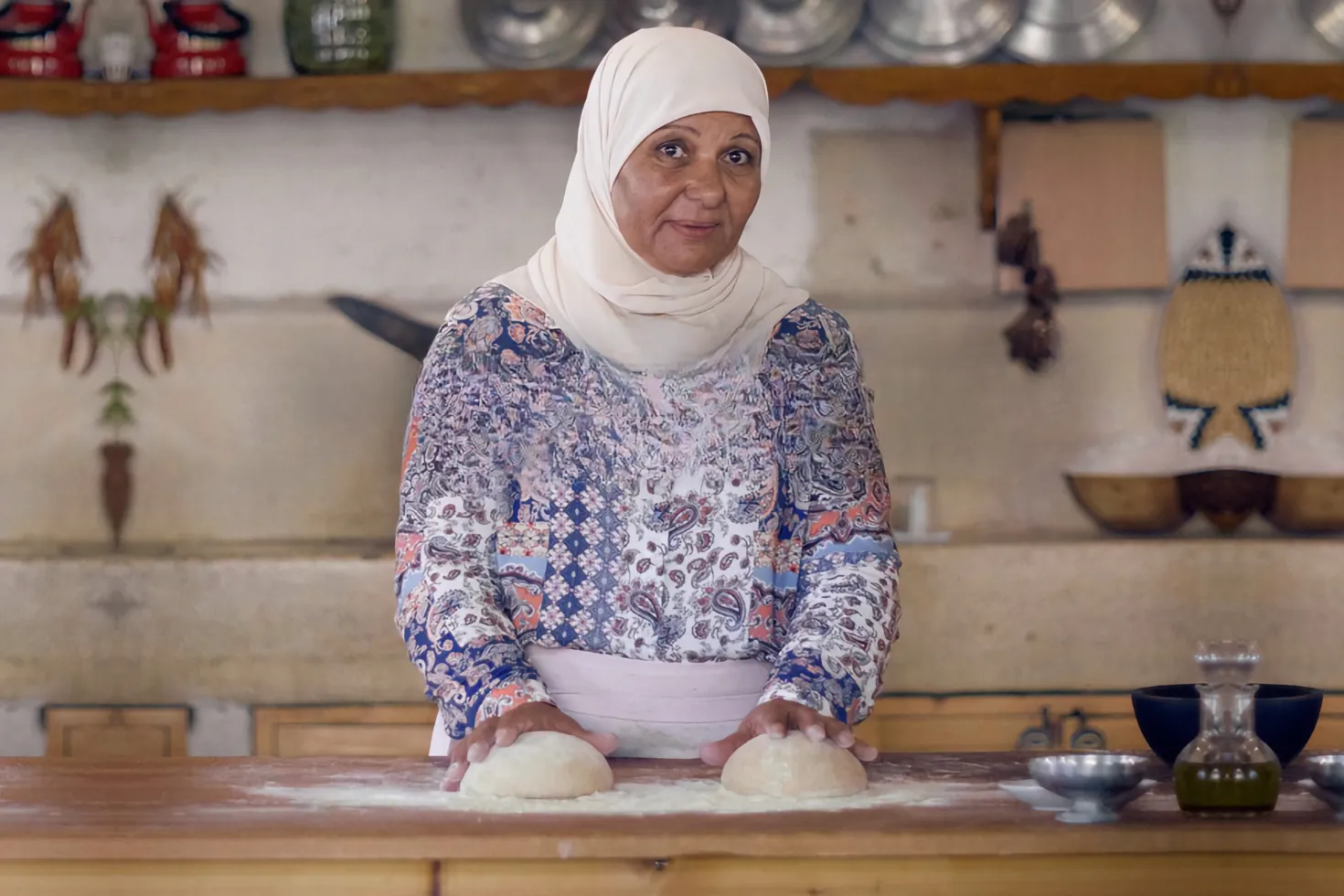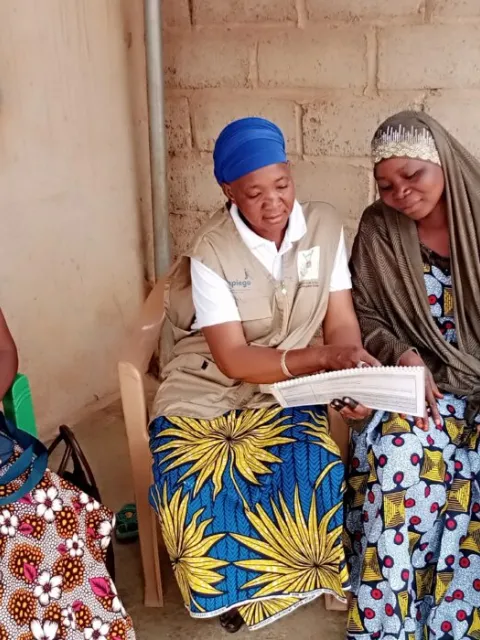Breaking down the stigma: women and cancer care
From before their diagnosis to life after treatment, women suffer from many different forms of stigma with regards to cancer. Gender norms, societal views, fear of discrimination and feelings of shame add emotional suffering to the physical harms of cancer.

Cultural norms and stigma surrounding women's cancers can make it difficult to raise awareness of the early signs and symptoms. The Lebanese Breast Cancer Foundation created a video kneading dough balls to give women a simple recipe for self-examination.
HIGHLIGHTS
- Cancer stigma affects both men and women globally and is influenced by income, ethnicity, gender norms, culture and type of cancer.
- Women suffer from additional stigma when cancers are linked to their reproductive system and traditional gender roles.
- Transgender women are more likely to delay screening and care due to fear of discrimination in the healthcare system.
- A holistic approach to cancer care is needed, while education and awareness campaigns can help break down existing stigmas.
- Cancer care needs to go beyond the physical to address the fear, shame, and guilt felt by women, which can impact their access to care and chances of survival..
Cancer is often shrouded in stigma – from the day a person is diagnosed to long after being declared cancer-free. The myriad false assumptions, negative attitudes, and stereotypes associated with cancer affect men and women in all countries and are often influenced by income, race, and culture, as well as by the type of cancer suffered.
Both men and women experience stigma when cancer offsets societal norms of masculinity and femininity. Men are expected to show stoicism over sentiment. Faced with a cancer diagnosis, they may not express their feelings nor seek the emotional support they need.
When the effects of treatment threaten ideas of virility – such as erectile dysfunction and the development of breasts caused by prostate cancer treatment – a man’s self-esteem can plummet. Changes to a woman’s body due to cancer treatment – hair loss, weight gain, scarring, mastectomies – can also lead to a negative body image and a perceived loss of femininity. A study recently published in The Lancet showed that 92% of female cancer patients experienced body image disturbances.
Despite similarities between sexes, women suffer from additional stigma. There are several reasons for this. When a cancer is linked to a woman’s reproductive system – such as breast, cervical and ovarian cancers – misconceptions run rampant.
Take cervical cancer as an example. HPV vaccination can prevent most cases of cervical cancer if taken before exposure to the virus. And yet, vaccine hesitancy is a major problem. Many parents do not let their daughters get the jab, believing that this will lead to sexual promiscuity. Many women will not screen and treat for cervical cancer as they know that being HPV positive can seen as a sign of infidelity and lack of sexual restraint.
Moreover, the expectation that women take care of the family and home can cause problems when cancer treatment gets in the way. It can be difficult to go from primary caregiver to being the one in need of care. If a woman’s mothering abilities are interrupted due to cancer treatment, she does not only feel sadness; she may also feel a sense of shame and guilt. And the caregiving duties she is no longer able to fulfill are not always taken up by her partner. A US study from 2009 found that relationships are more likely to end in separation or divorce when the sick partner is a woman.
In some societies, the consequences of having cancer for women are so extreme that they prefer not to know. As well as a fear of being rejected by both partner and community, many believe that cancer is an automatic death sentence. Pursuing cancer care would be tantamount to putting their family out of pocket to treat an incurable disease. This is a self-fulfilling prophecy, as an unwillingness to be screened leads to delayed diagnoses and lower chances of survival.
For different reasons, transgender women also tend to stay away from health facilities. They are more likely to delay screening and care, fearing discrimination in the healthcare system. For instance, medical professionals may not consider the emotional aspect of breast cancer screening for those who have had chest surgery. Sometimes, it comes down to a simple lack of knowledge. Transgender women taking feminising hormone therapy have a greater risk of breast cancer compared to the average man. Yet this does not necessarily translate into more regular screenings.
“Fear of discrimination or past mistreatment can cause an underlying mistrust in the healthcare system, as might be the case for those who lived through the HIV/AIDs epidemic, a disease that is still attached to significant and paralysing stigma.”
– Nicolas Clifford, Manager of Research and Education Communications for PanCAN in "Pride Month: A Focus on Disparities Facing the LGBTQ+ Community"
How can the stigma surrounding women and cancer be tackled? First, a holistic approach to cancer care is needed. Governments and healthcare institutions need to question why women are reluctant to seek care and how they can be supported through treatment, and beyond.
For example: it is not enough to provide cervical cancer screening facilities if women do not show up out of fear of being shamed by the community. In this case, self-testing kits can be a game changer, as they allow women to screen for the disease in the privacy of their own homes. If women find it difficult to attend appointments, perhaps because of a lack of childcare options or means of transportation, mobile screening clinics with flexible operating hours are another solution.
Even better than working around existing stigma, would be to break it down altogether. This often starts with education. Healthcare professionals should be trained in non-judgmental attitudes towards transgender women, and to engage in open discussion about sexual health. Among the general public, taboos surrounding cancer through awareness campaigns should be dispelled: HIV and HPV are not the same thing, cancer is not an infectious disease, nor is it a death sentence.
Unable to talk about – let alone look at – certain body parts? Know Your Lemons Foundation came up with an ingenious way of teaching women to recognise signs of breast cancer, by showing them different bruised, discoloured and lumpy lemons. The Lebanese Breast Cancer Foundation knead dough balls to give women a simple recipe for self-examination.
Who better to raise awareness than those with first-hand experience? Women who have been through cancer can become advocates for change. This World Cancer Day 2023, the Society for Cancer Advocacy and Awareness (SCAN) Kuching hosted a fashion show in which cancer patients posed on stage, hand on their hips, wearing boldly-coloured headscarves and bright smiles. The marks left on a woman’s body following treatment should be seen as proof of strength and resilience rather than a source of shame.
“A woman who has had screening and treatment and is healthy is a really excellent advocacy tool to tell the women not to be afraid.”
– Dr Chemtai Mungo, Assistant Professor of obstetrics and gynaecology at University of North Carolina at Chapel Hill in podcast "Cervical cancer – achieving equity through innovation"
In high-and low-income countries, women can experience stigma – before, during and after a cancer diagnosis. Cancer care needs to go beyond the physical. The fear, shame and guilt felt by women are not side issues – they can have a real impact on their access to care and chances of survival. In order to achieve efficient cancer control, we need to take the stigmatisation of cancer into account: that which comes from the outside and that which is ingrained in women’s minds.
Last update
Thursday 15 February 2024
